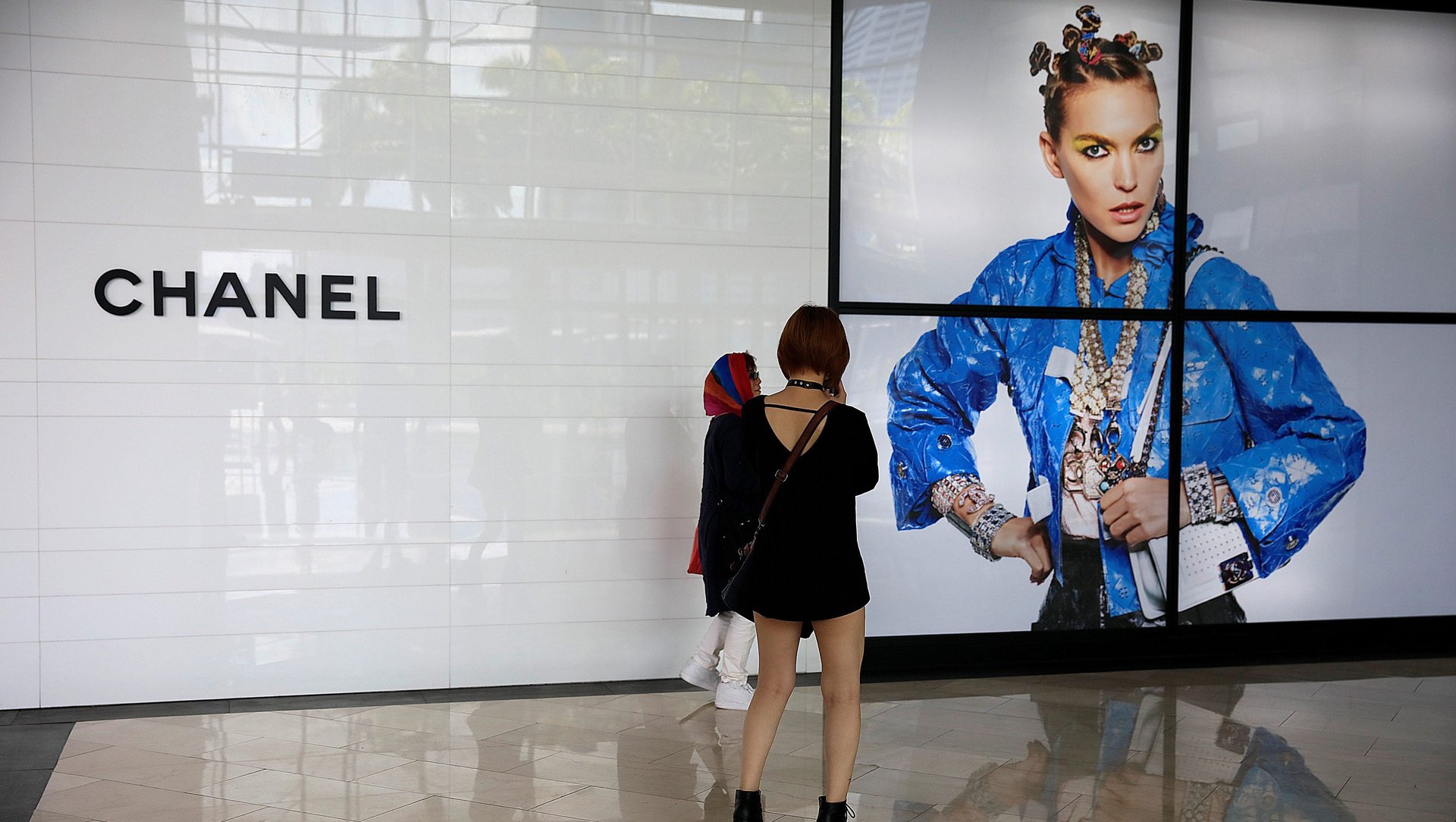For luxury brands, selling clothes is basically a marketing expense
A runway show full of dramatic gowns or sharp suits from Gucci, Prada, Louis Vuitton, and their ilk is always a major production—sometimes of epic proportions. But it’s an open secret in fashion that the big luxury houses are no longer truly in the clothes business.


A runway show full of dramatic gowns or sharp suits from Gucci, Prada, Louis Vuitton, and their ilk is always a major production—sometimes of epic proportions. But it’s an open secret in fashion that the big luxury houses are no longer truly in the clothes business.
Their moneymakers these days are fragrances, handbags, shoes, and accessories. Indeed, new research suggests, for the Pradas and Louis Vuittons of the world, too much dependence on clothes can actually be a liability.
In the modern luxury market, a report by Exane BNP Paribas and the fashion consultancy VR Fashion Luxury Expertise says, clothing may be a “brand-defining core category”—but it is “hardly profitable.” This category, known as ready-to-wear (RTW), refers to the clothes you buy off the rack at stores and online, and the report’s authors note that most brands lose money on it.
That’s right: For many fashion brands, fashion is a loss leader. And it’s one that offers less and less benefit proportional to its cost to produce, the report suggests, especially as shoppers can easily find variations of the same trendy styles across the price spectrum, including knockoffs at cheap fast-fashion chains.
“We consider high exposure to RTW as a structural weakness,” the report states, noting that clothing doesn’t have the same “recognition factor” as accessories, such as the new “it” bag or shoe of the moment. Insofar as customers are buying these brands as a way to communicate status, clothes are simply less effective—which also makes their high prices hard for consumers to justify.
For the brands themselves, producing clothes is costly, as is staging runway shows. Meanwhile, it’s getting harder to convince consumers to pay full price, and displaying a collection properly in a physical store requires a lot of space, at a time when brick-and-mortar retail is in flux. As a result, sales of clothes are low and operating margins vanishingly thin.
The CEO of Vetements, Guram Gvasalia, made this point recently when explaining why the popular French label nixed its Paris Fashion Week runway show.
“Today shows have nothing to do with clothes anymore,” he told WWD (paywall). “Most of the looks are not even produced and therefore never get to the shop floor. Shows are there merely to sell a dream that at the end of the day will sell a perfume or a wallet in a duty-free store.”
Not every brand operates on these terms. Like Vetements, independent designers Rick Owens and Dries Van Noten are known for making their money by actually selling clothes. That’s no easy feat. Unlike large luxury houses where designers have the freedom to design mainly for show, they have to produce collections that people will actually wear, at prices they’re willing to pay. Small designer labels go out of business all the time because they fail to hit this sweet spot.
The major European luxury groups smartly limit their exposure to the vagaries of the apparel industry. At Kering, Prada, and Hermès, clothes are only about 10% of the business. Instead, most sales come from bags and other items. “High-end fashion was once a ‘real’ business,” the report says. “The goal was to produce beautiful garments that real people would wear. This is rarely the case today.”
So why do most luxury brands continue making expensive clothes? Fashion executives don’t often address the point openly, but Tom Murry, the former CEO of Calvin Klein, offered an explanation in a 2011 interview. For a company that makes its money off underwear, jeans, and perfume, he told Business of Fashion, there’s still a real value to a runway line like CK’s Calvin Klein Collection:
Well it’s not a business that contributes to the bottom line and it probably never will be. For us, it’s a marketing expense and we generate an incredible amount of editorial that is based on being in that business. The PR department creates over $400 million a year in equivalent editorial, which is massive and which we believe has a very significant impact on our brand image globally.
We have reached out to Calvin Klein for comment, since Murry retired from his longtime role in 2014, and Calvin Klein is now working to reinvigorate its runway lines under creative director Raf Simons. We will update this post with any reply.
But Murry’s point was echoed in the new report. “The value of maintaining a RTW business is in the aura it creates for the brand,” it explained, emphasizing that the goal of all those expensive clothes, in most cases, is just “not to lose too much money.”